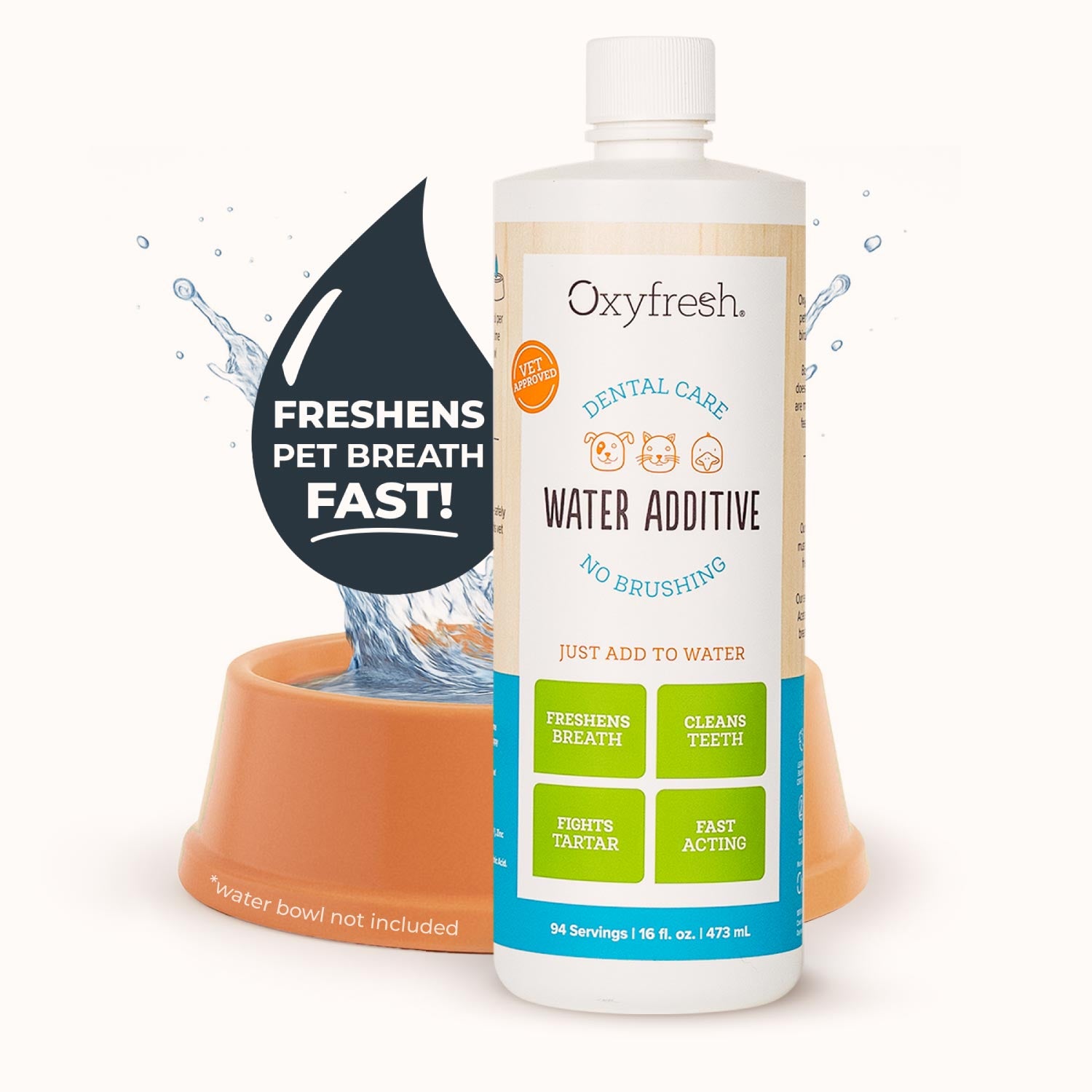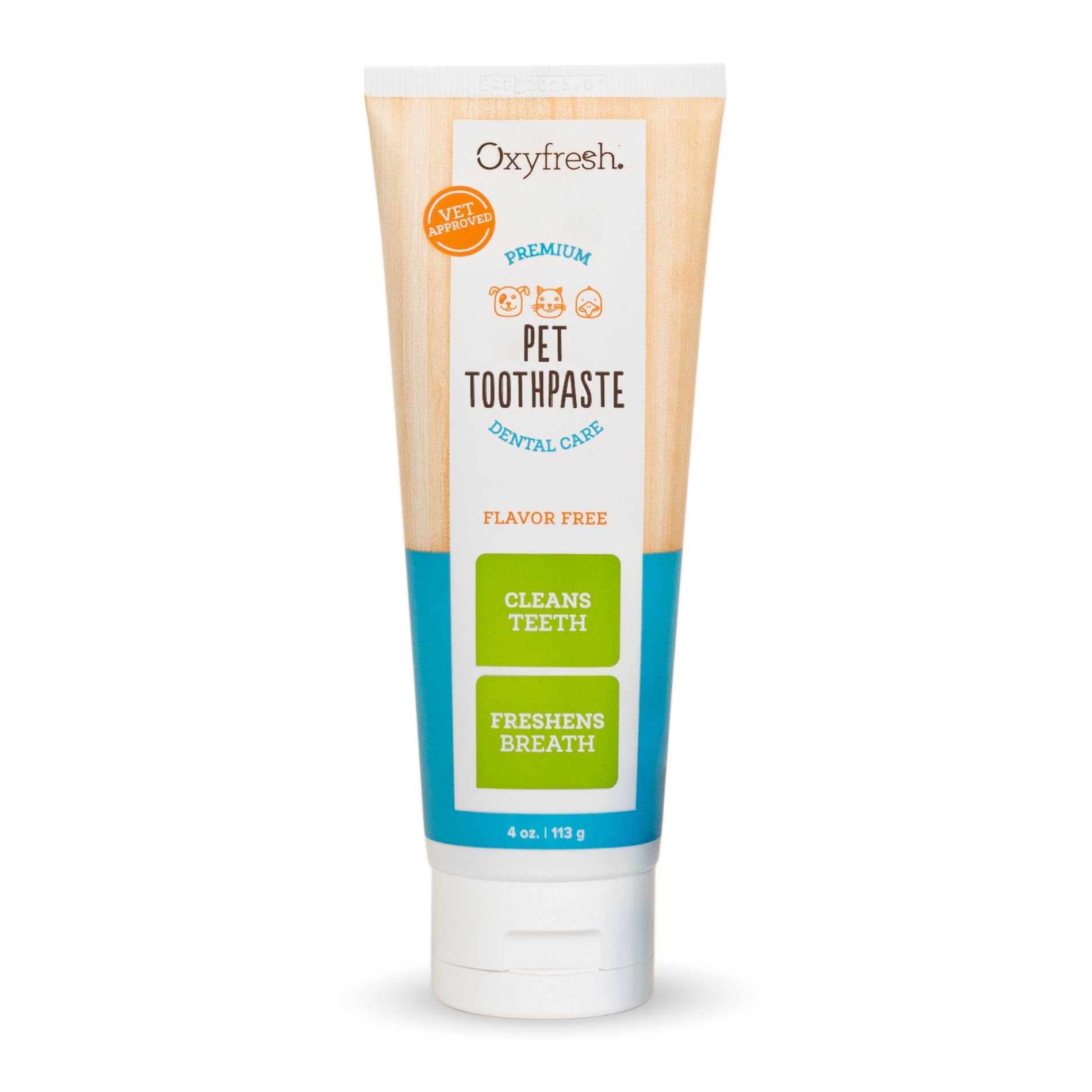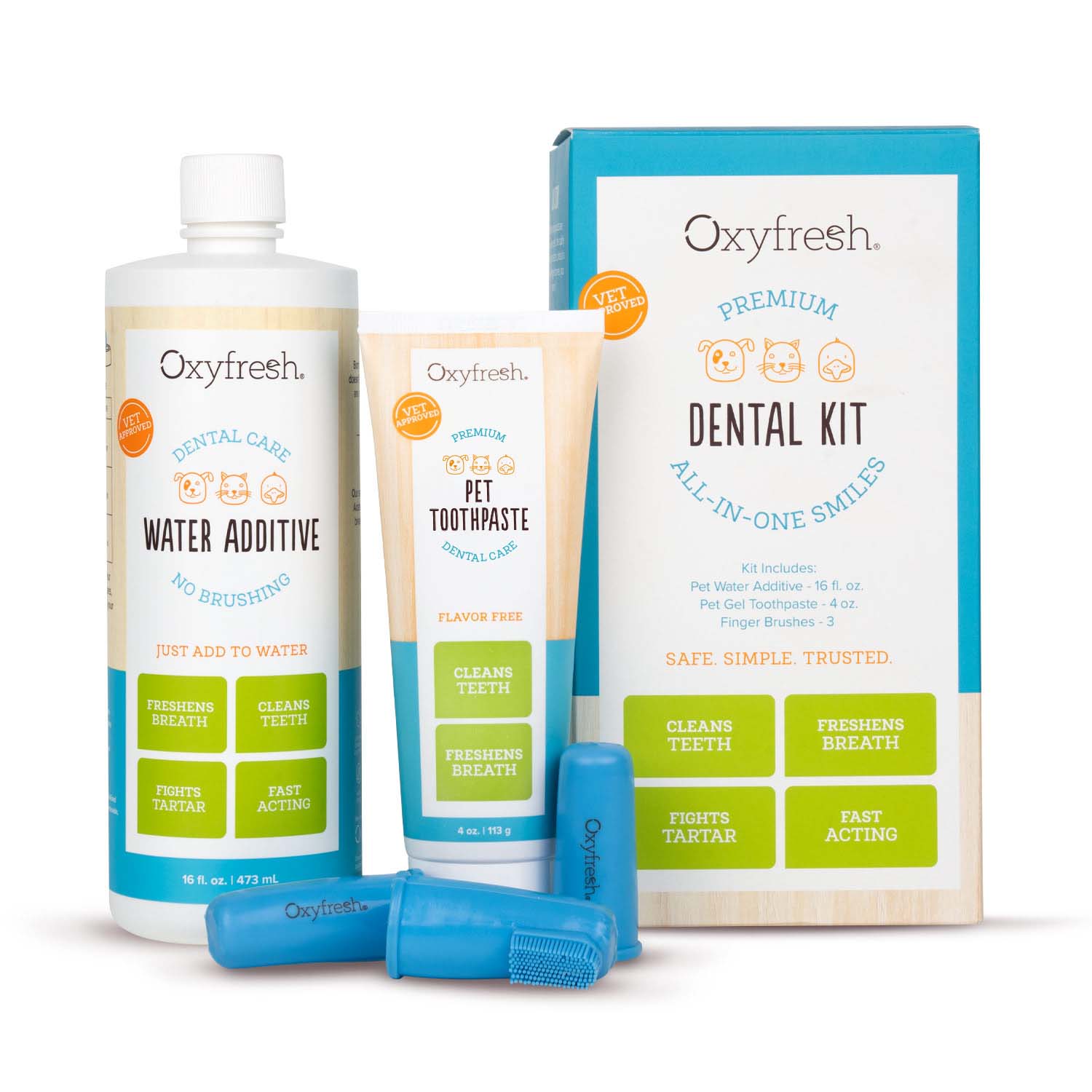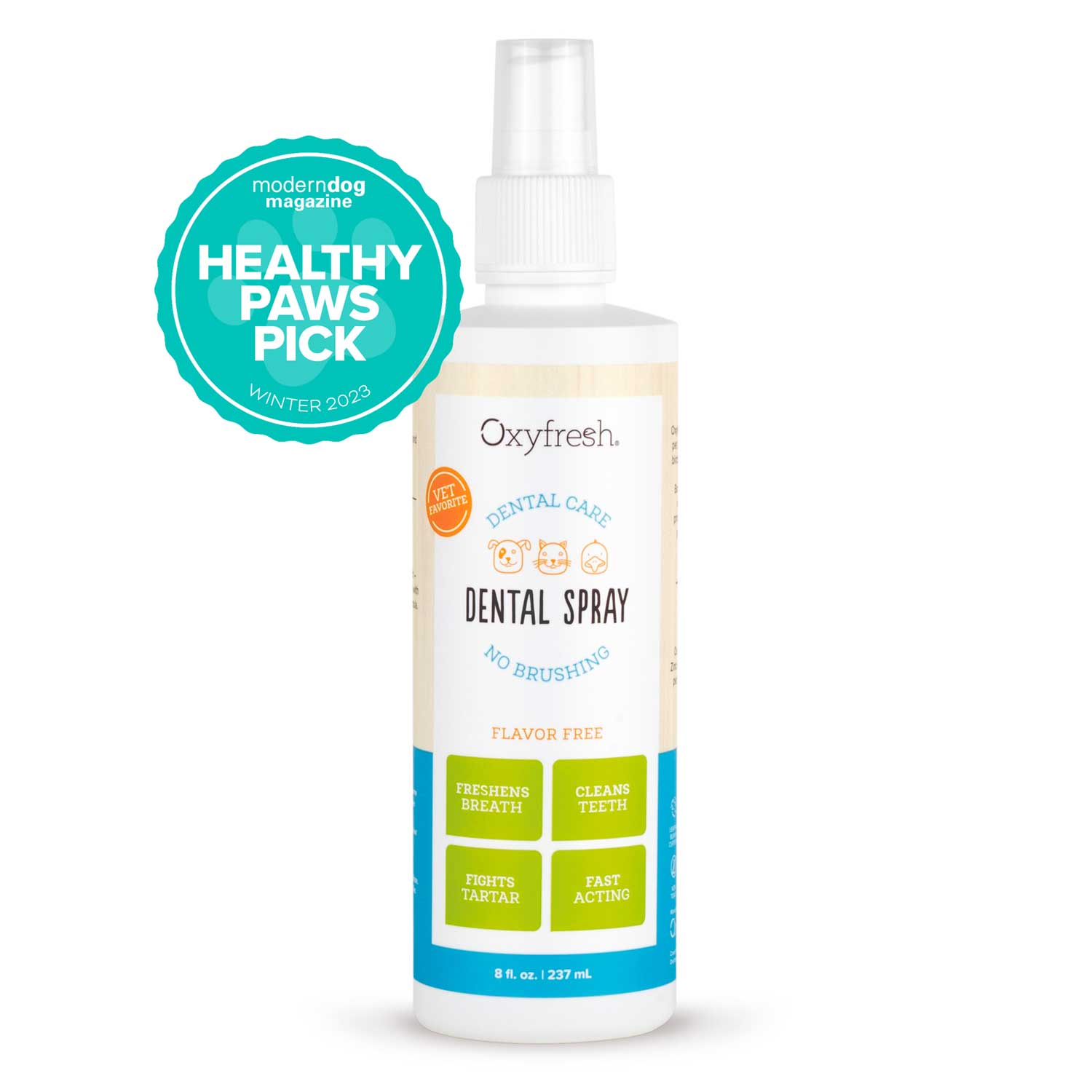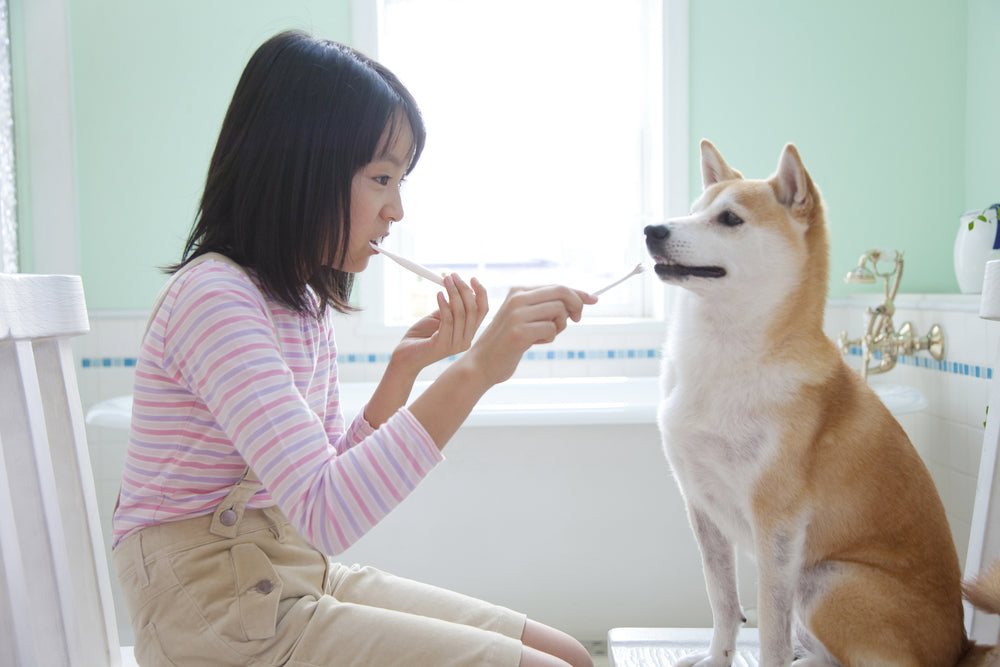Surprising fact … cats aren’t immune to bad breath. Just like dogs, they can suffer from bad breath, especially when their oral care is being neglected. In fact, bad breath in cats is often an early warning sign of periodontal disease.
Periodontal disease (aka advanced gum disease) is the most common reason for bad breath in cats. Experts say that by age 3, 70 percent of cats already have gum disease. (Often, the only warning sign is bad breath.)
As always, prevention is the best method to avoid bad breath and gum disease in your cat. But what if it already has stinky breath? Fear not. Check out these 5 secrets to improve bad breath that cats often have.
Stop Plaque Buildup, Stop Bad Cat Breath
Plaque is the icky, sticky film that forms on a cat’s teeth after they eat. If the plaque isn’t removed, it can begin to harden into brownish tartar within a matter of days. Tartar can get under the gum line causing infection, irritation and eventual tooth loss.
Plaque and tartar are loaded with bacteria. Bacteria isn’t just stinky … it can be harmful to the vital organs inside a cat’s body.
Bacteria can enter your cat’s bloodstream and cause a host of health problems, from heart disease to liver problems and more. That’s why removing plaque each day is so important.
Pro Tip: Plaque is easily removed. Once it hardens into tartar, though, a professional cleaning by the veterinarian will be necessary.
5 Easy Ways to Get Rid of Cat Bad Breath
1. Brush Your Cat’s Teeth To Fight Bad Breath
Brushing your cat’s teeth is still the best way to keep plaque and tartar from building up. The less plaque, tartar, and decay – the fresher your cat’s breath will be. It is best to brush their teeth daily. If that’s just not possible, aim for brushing 3 times a week, preferably when your cat is relaxed.
There are toothbrushes designed specifically for cat’s teeth, but you can also use a children’s toothbrush or finger brush. Your local pet store or grocery store should carry them.
Use toothpaste for cats, and never use toothpaste that is normally for humans. Fluoride and sweeteners in human toothpaste can be harmful to cats, since they don’t get to spit it out like we do.
It’s best to choose a cat toothpaste that isn’t flavored, because artificial meaty flavors can make their breath worse, and most animals aren’t a fan of mint. When it comes to cat toothpaste, odorless and tasteless is the way to go. Want more info? Check out “Why You Need a Cat Toothpaste: 3 Surprising Facts.”
2. Quality Cat Water Additive Will Keep Bad Breath Out
Dental water additives can often be a great solution since most of us don’t have the time or the desire to brush our cat’s teeth. All you do is add it to their water bowl. The important thing is to use a water additive that is specifically for animal use and preferably one recommended by your vet.
Oxyfresh Pet Dental Water Additive has been vet recommended for nearly three decades. It’s the easy-peasy way to fight plaque and freshen your cat’s breath each day. Consider sending a link to your vet to see if they would recommend it for your cat. Once again – make sure you choose a water additive that is both odorless and tasteless, so your cat won’t even know it’s there.
3. Try Dental Treats and Chew Toys For Cats To Freshen Breath
Some treats and chew toys claim to remove plaque and tartar in pets. Every cat is different though, so experiment with a treat or toy and see if you notice a difference.
You’ll want to choose cat treats that are low in carbs. Also, look for plaque-fighting cat treats that have the registered seal from the Veterinary Oral Health Council (VOHC).
What about raw bones? If you can plan for a mess, raw bones are nature’s way of cleaning the teeth, as they have lots of natural enzymes to fight plaque. (Note: never give cooked bones to a cat; they can splinter and cause a choking hazard.)
Keep in mind that these products only work as a supplement to home dental care. You can also ask your vet for recommendations that would be safe for your cat.
4. Give Your Cat a Proper Diet To Prevent Bad Breath
Many people believe that raw and canned foods are causes of cat bad breath and to instead feed dry kibble, but this simply isn’t true. The most important thing is that the cat food is high quality.
Make sure that you choose high-protein food with real meat and lots of water to avoid dehydration and other problems. A dry mouth is a leading cause of bad breath, whether you have two legs or four!
Also: if you’ve switched cat food brands lately, there’s a chance your cat could be allergic to one of the ingredients. Food allergies will cause cats to have bad breath.
5. Visit the Vet Regularly To Keep Your Cat’s Breath Fresh
A check-up with your cat’s veterinarian is the best way to know what to do about that bad breath. Sometimes bad cat breath can be a sign of a more serious health condition like diabetes, kidney disease, tumors or liver problems. Catching these conditions early is key.
But seriously…
The easiest and most effective way to get rid of bad cat breath, to clean their teeth, and to fight tooth decay is to use Oxyfresh Pet Dental Water Additive. All it takes is one capful in their drinking water each day! That’s it.




